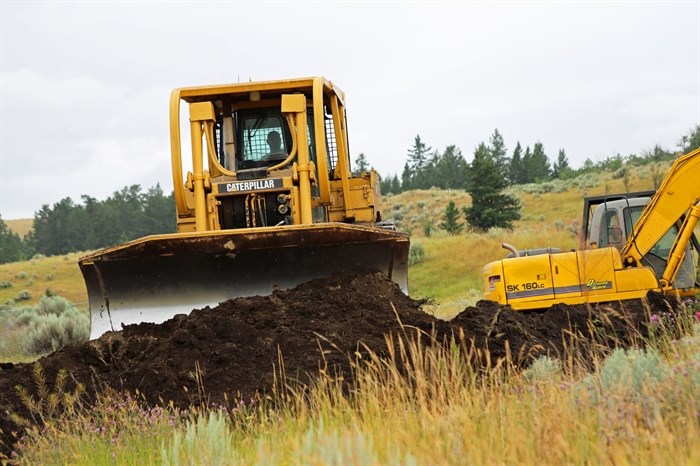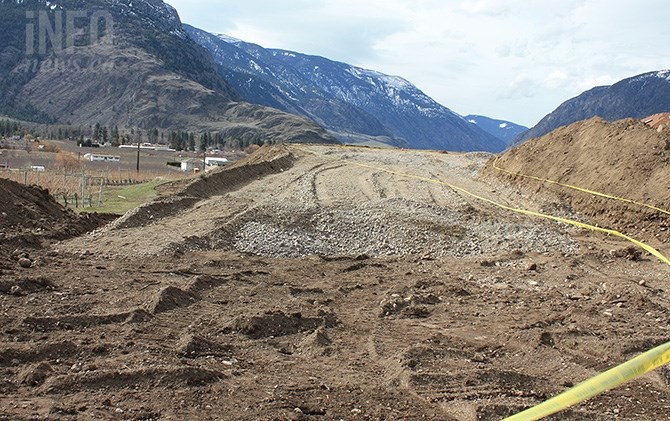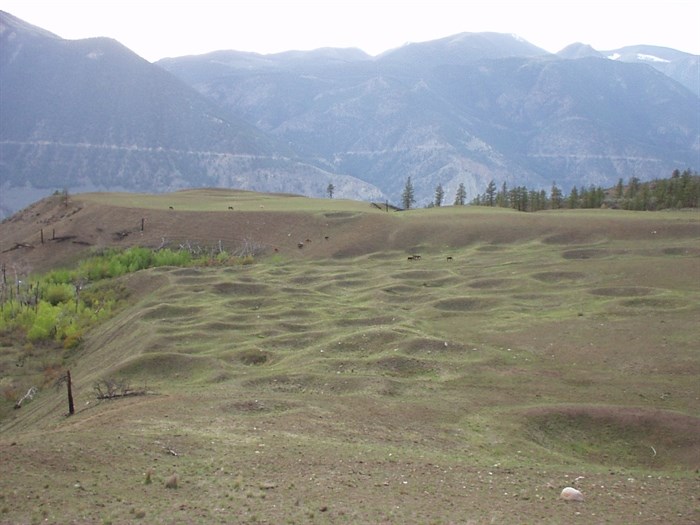
Residential developers or home owners may find signs of an archaeological site after they start building, but cover it up due to associated costs.
Image Credit: FILE PHOTO
October 18, 2016 - 2:33 PM
KAMLOOPS - Some Kamloops archeologists would like to see local governments step in to help save historical sites, and potentially save thousands of dollars for homeowners.
Archeologist Joanne Hammond says when a homeowner prepares for renovations on their property, they don’t think about the artifacts that may lay beneath the surface. She says they need to be aware of what they might be digging into.
While industrial sites normally get an archaeological review before construction begins, residential sites often lack that step, and that could leave homeowners liable for thousands of dollars in archeological assessment fees.
“It’s quite common that they’re ordered to stop and get themselves an archaeologist,” Hammond says. “Then they can no longer control the costs and schedule.”
If land being built on turns out to be a historic site from before European contact, the province's Heritage Preservation Act comes into play, and whoever is doing the work is liable for costs associated with an archaeological assessment. The costs can range from $500 to $20,000. In B.C., archaeologist assessments are paid for by the land owner who’s doing the work, not the province.
The Act covers precontact archaeological sites, or ones from before 1846 when contact between First Nations and newly arrived Europeans first happened.

Work near a Cawston orchard in the South Okanagan unearthed what is believed to be a native burial site.
Image Credit: FILE PHOTO
Often residential developers skip having the land assessed by an archaeologist when building a housing development, Hammond says. Legally they don’t have to do anything unless a historical site is discovered in the process. If they skip the step, or ignore any evidence of something there, the homeowner can purchase their home without knowing what's beneath it.
If a developer didn’t do an assessment before building and the homeowner finds artifacts underground when they decide to dig up their property for some reason, the homeowner is on the hook for the bill. Hammond says she knows of a few homeowners currently going through this type of process.
She wants the city or regional district to add a step involving archaeological assessment into building permits for residential developments similar to what is done for environmental assessments.
"The best we can do is have early risk assessment," she says. "The solution is for it to be integrated into development permitting processes."
The province has created the legislation, but there’s not way to enforce it she says. Inspecting every site would be too big and expensive a project to be practical, and points out there are no archaeological police. Instead, assessing entire housing developments at one time would be more efficient use of time and money.
Hammond says she has the support of other local archaeologists who agree it’s smarter, less damaging to the artifacts and more efficient to do the assessment earlier in the project, instead of later. She says plans can be altered and costs avoided.

Projectile pieces found in the Kamloops area.
Image Credit: Contributed by Joanne Hammond
Hammond says many archaeological sites go unreported, with artifacts lost due to people reburying them when they find them in order to avoid the costs associated with bring in an archaeologist. She says that means artifacts may be lost when people build a pool or gas lines are installed.
“We’re pretty sure that happens a lot,” she says. “Unfortunately we don’t have any way to deal with that.”
Previously unknown sites are often found in Kamloops, she says, which already has hundreds of sites that date from before records were kept.
“There are so many sites because people have been living in this area for close to 10,000 years,” she says.
At least a half dozen villages were in or around what became Kamloops, Hammond says. That includes a settlement that was one of the largest in B.C.’s interior at one point. While population estimates aren’t exact, the largest settlement could have been the home to 5,000 people, with many smaller villages in the Kamloops area.
“In all urban areas you can be sure there are sites underneath parking lots or other things,” she says. “There are a few archeological sites right in the city.”
However, those sites are kept secret due to concerns thieves will steal the artifacts and selling them online.

The remnants of pithomes at Keatley Creek near Lillooet, with horses for size comparison.
Image Credit: Contributed by Joanne Hammond
To contact a reporter for this story, email Brendan Kergin or call 250-819-6089 or email the editor. You can also submit photos, videos or news tips to the newsroom and be entered to win a monthly prize draw.
We welcome your comments and opinions on our stories but play nice. We won't censor or delete comments unless they contain off-topic statements or links, unnecessary vulgarity, false facts, spam or obviously fake profiles. If you have any concerns about what you see in comments, email the editor in the link above.
News from © iNFOnews, 2016